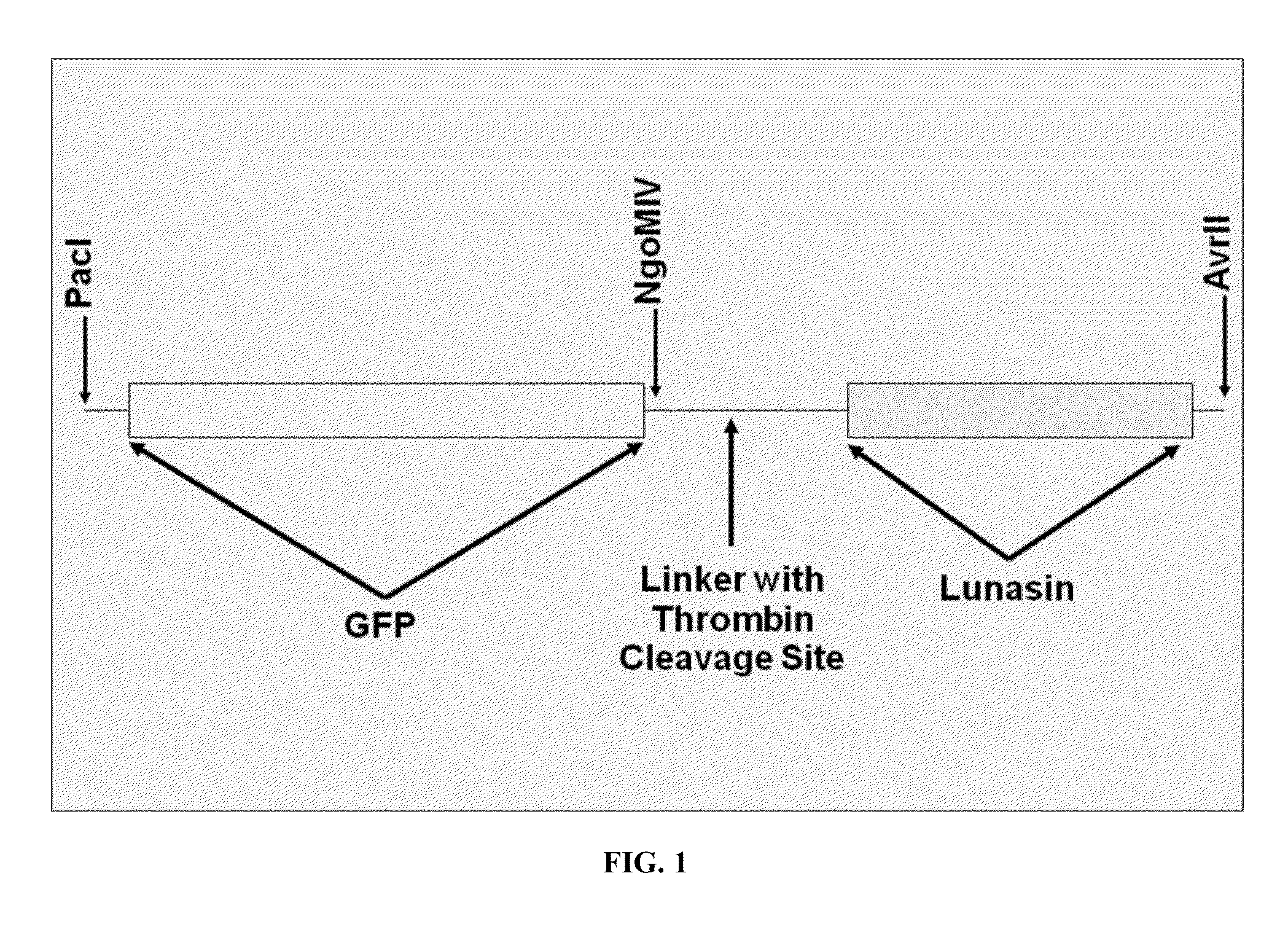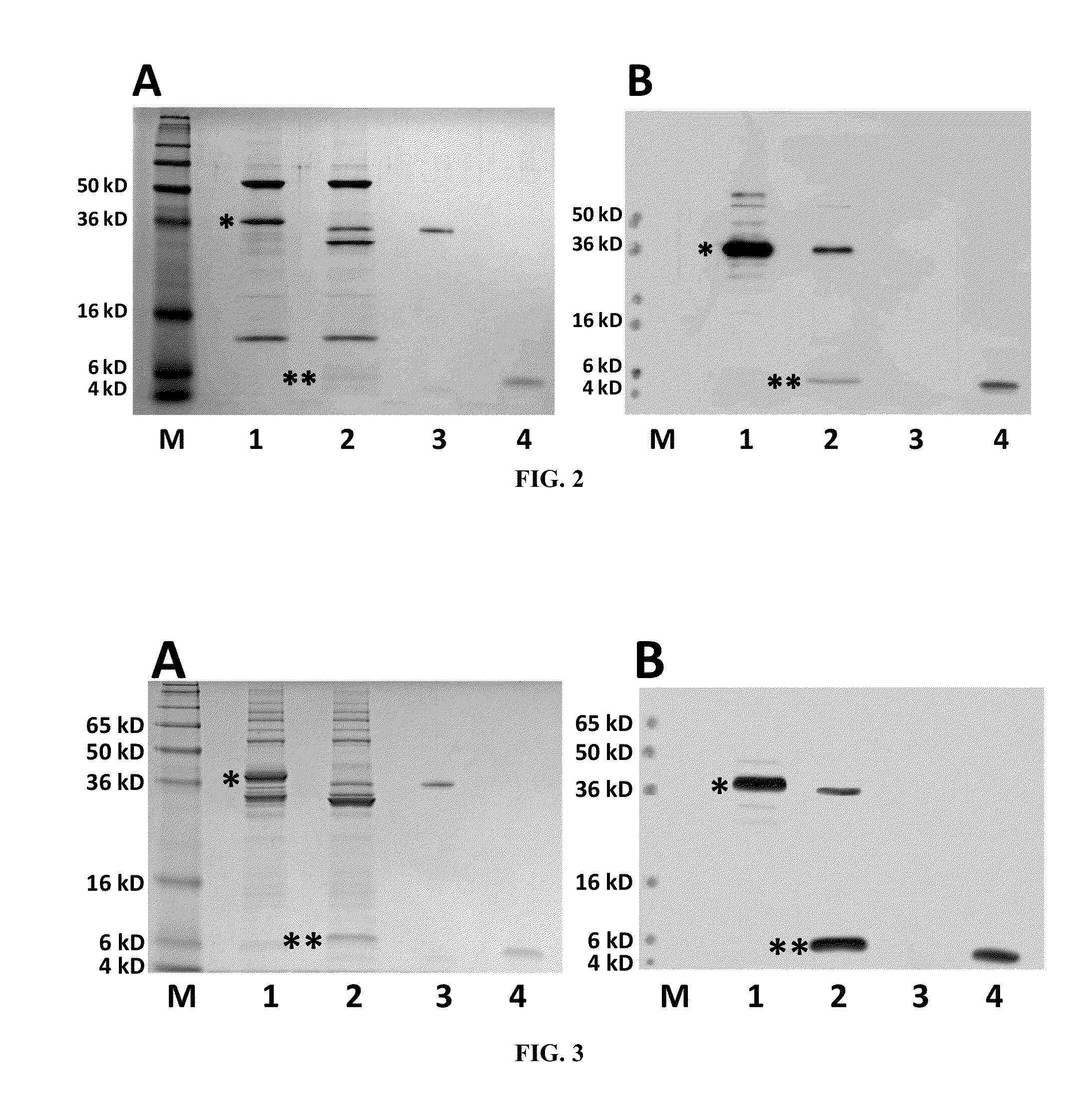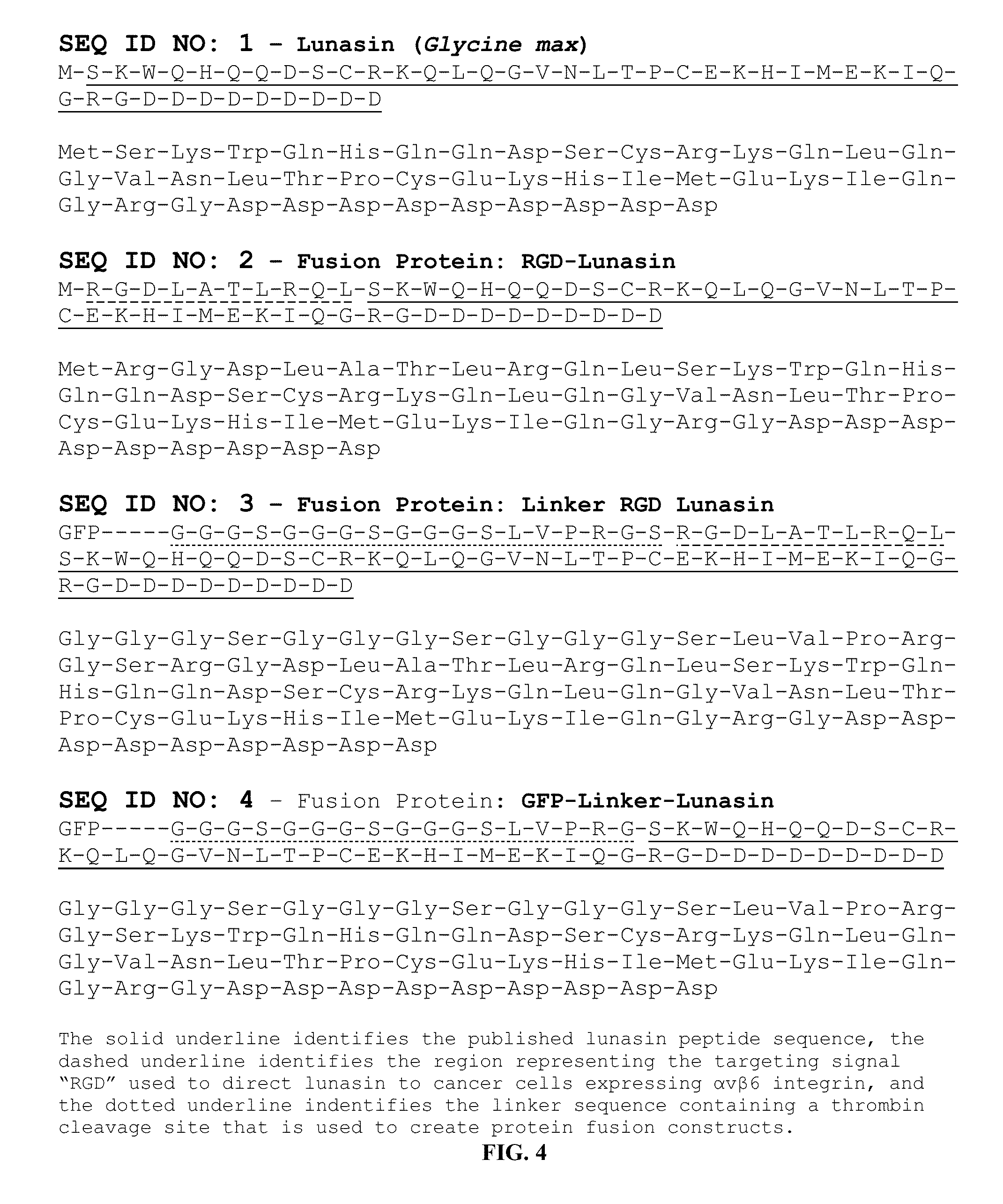Method of producing a lunasin polypeptide in plants
- Summary
- Abstract
- Description
- Claims
- Application Information
AI Technical Summary
Benefits of technology
Problems solved by technology
Method used
Image
Examples
examples
[0070]Lunasin is a small peptide consisting of 43-44 amino acids with a C-terminal end containing nine consecutive aspartic acid residues. Initial studies concerning the peptide's chemopreventive activity indicated lunasin kills cancer cells by disrupting mitosis and causing apoptosis. Lunasin was originally derived from soybeans but has been found in a variety of plant species at relatively low levels. Attempts to express the lunasin peptide in yeast and animal cells have not been successful. Therefore, the present inventors have developed a transient, plant-based expression system utilizing the Tobacco Mosaic Virus vector, Geneware®, and tobacco for large-scale production of lunasin. This system will allow production of purified lunasin in larger quantities.
[0071]A transient, tobacco-based (Nicotiana benthamiana) expression system based on the Tobacco Mosaic Virus vector, Geneware®, was used to study large-scale production of lunasin. With reference to FIG. 1, FIGS. 2A and 2B, and...
PUM
| Property | Measurement | Unit |
|---|---|---|
| Dimensionless property | aaaaa | aaaaa |
| Weight | aaaaa | aaaaa |
| Fluorescence | aaaaa | aaaaa |
Abstract
Description
Claims
Application Information
 Login to View More
Login to View More - R&D
- Intellectual Property
- Life Sciences
- Materials
- Tech Scout
- Unparalleled Data Quality
- Higher Quality Content
- 60% Fewer Hallucinations
Browse by: Latest US Patents, China's latest patents, Technical Efficacy Thesaurus, Application Domain, Technology Topic, Popular Technical Reports.
© 2025 PatSnap. All rights reserved.Legal|Privacy policy|Modern Slavery Act Transparency Statement|Sitemap|About US| Contact US: help@patsnap.com



